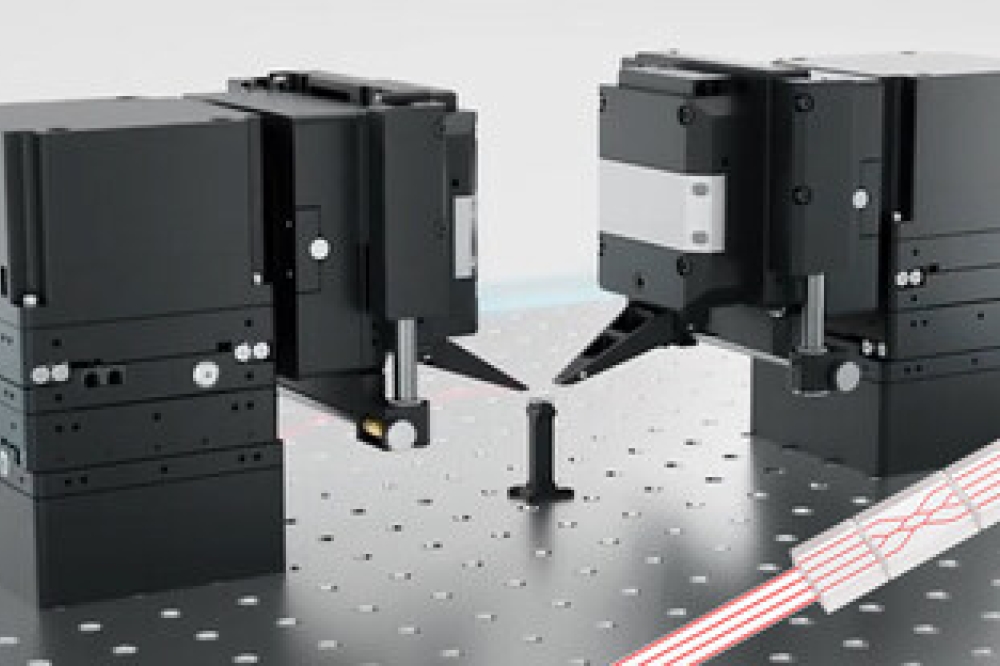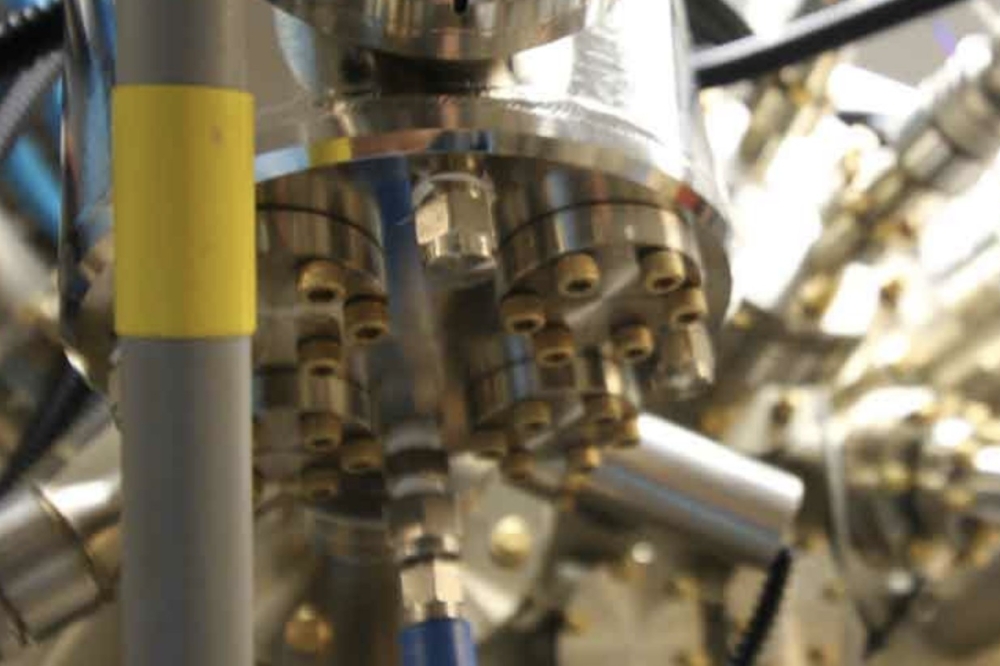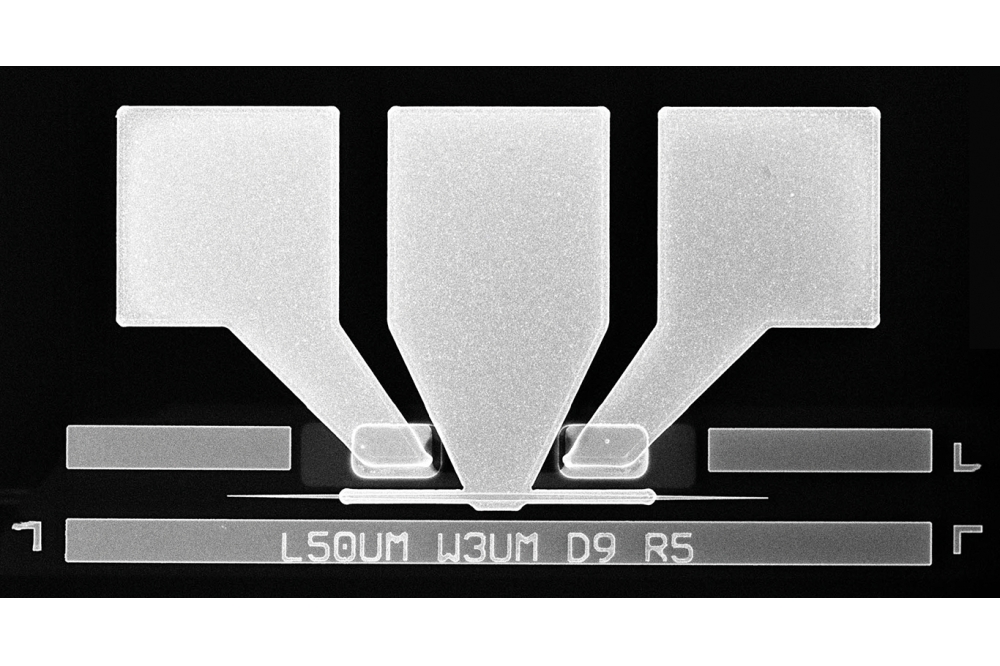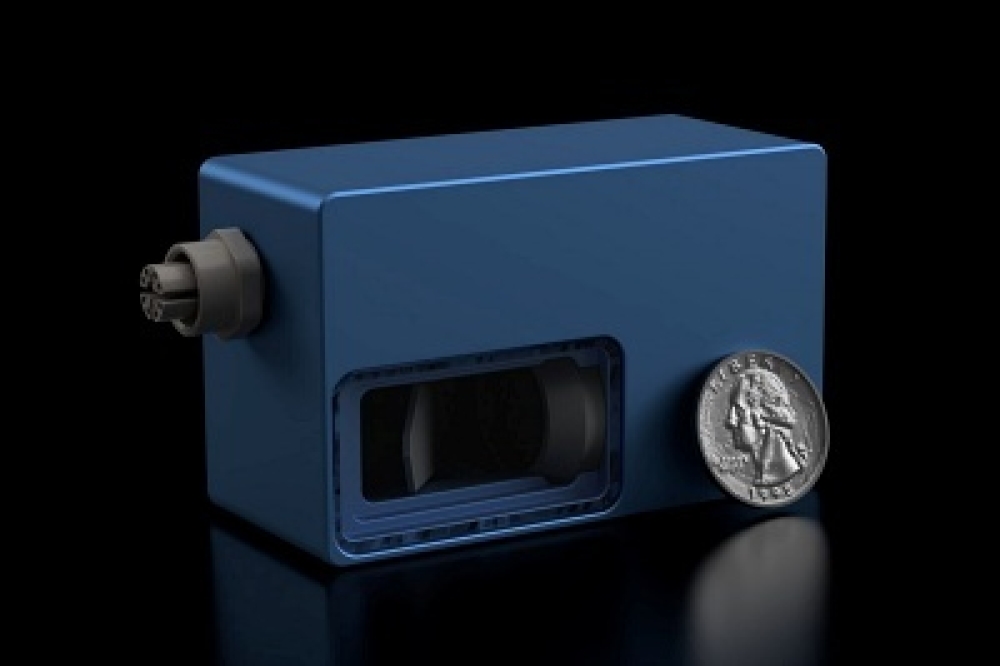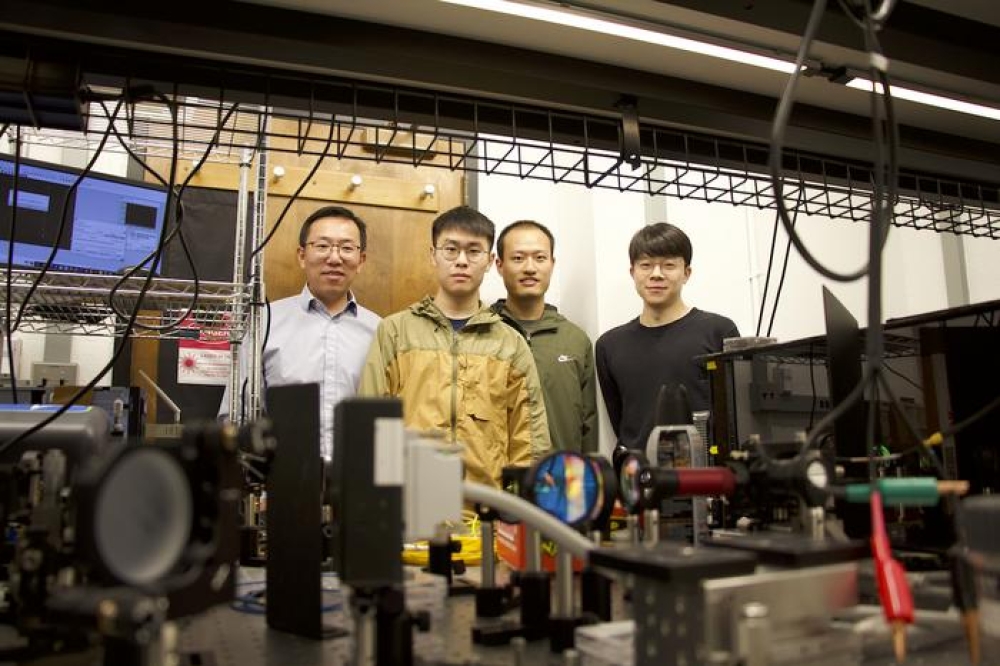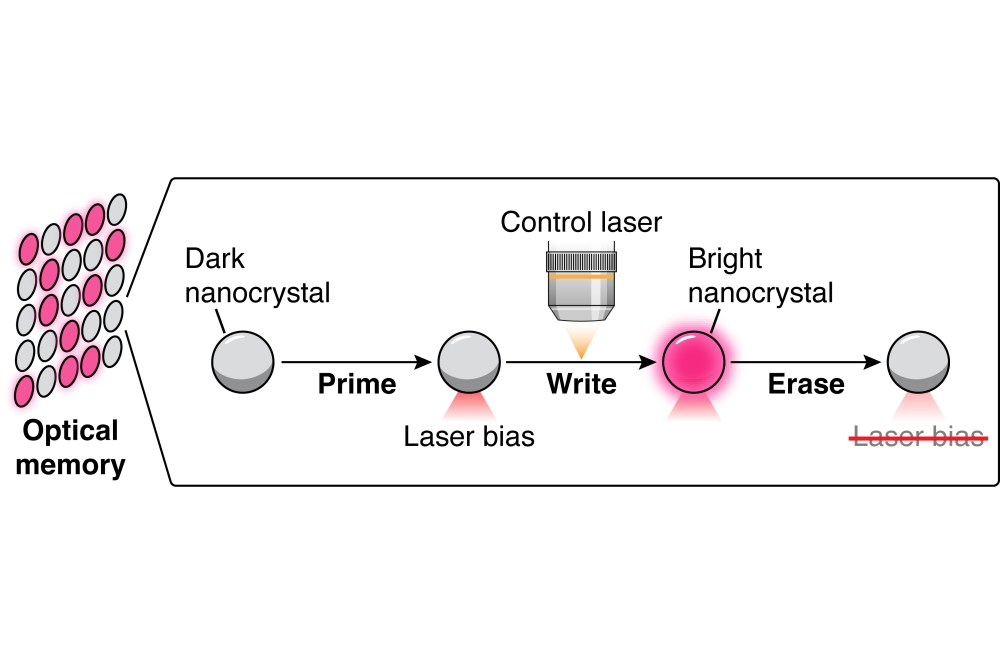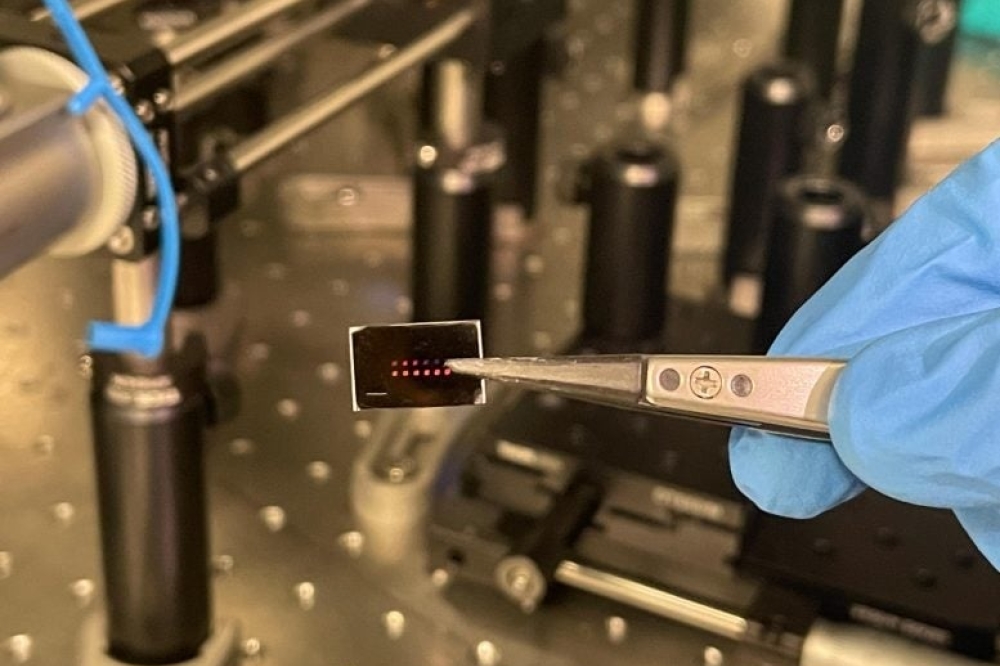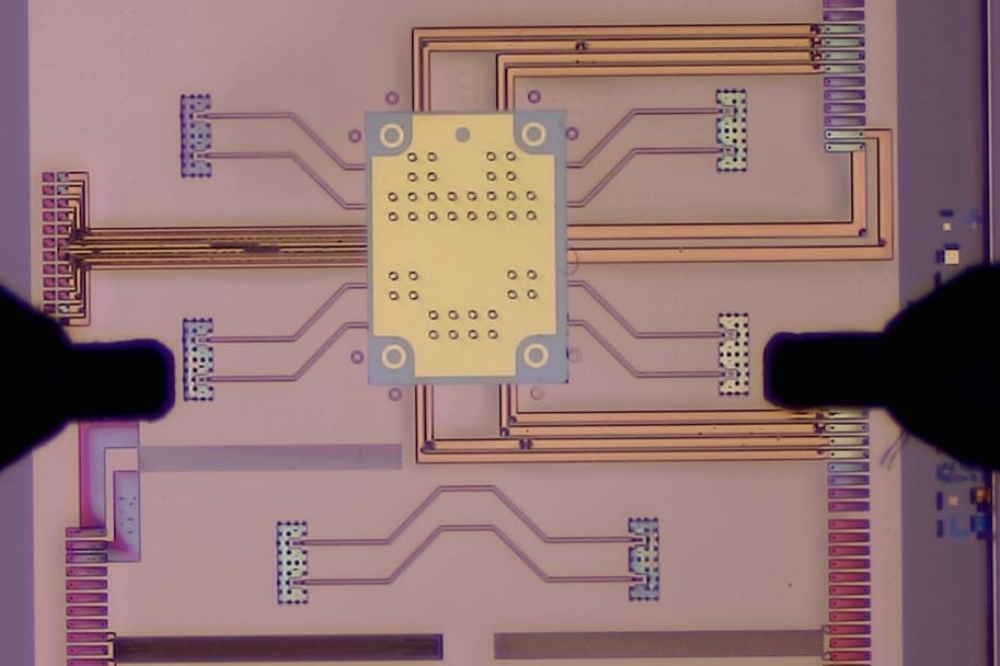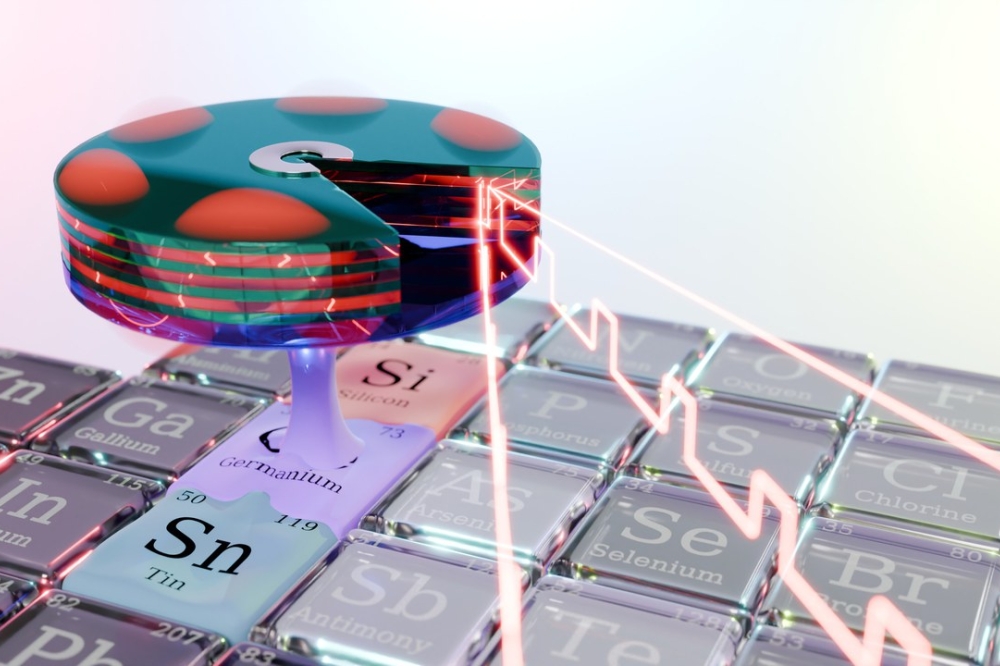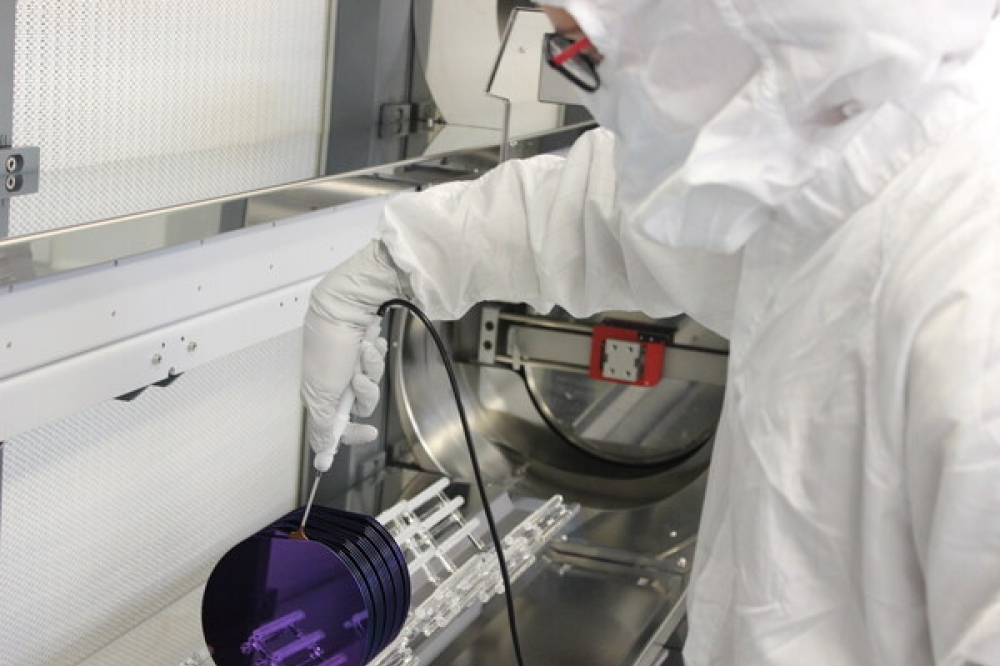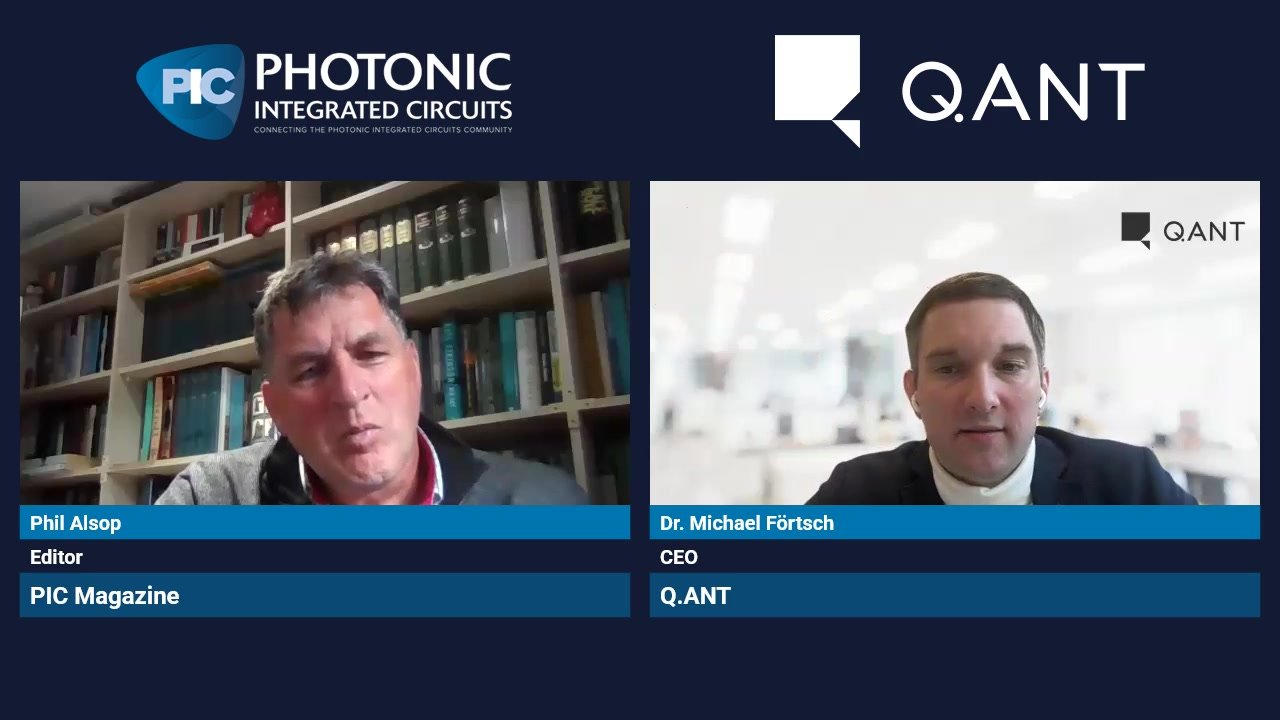Photo-induced superconductivity on a chip
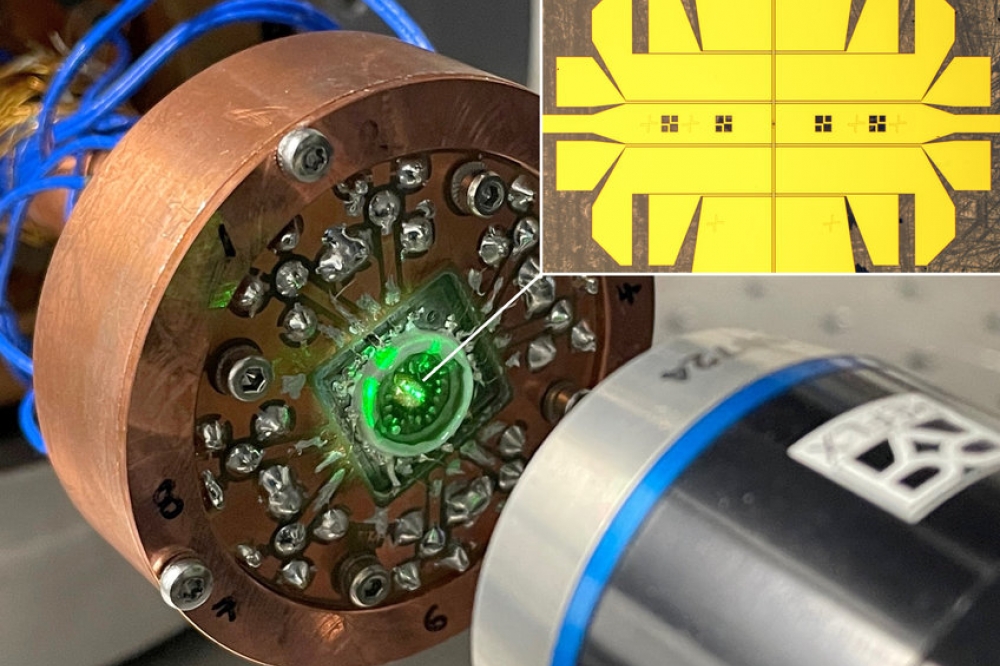
Image credit: Eryin Wang, MPSD
Researchers at the Max Planck Institute for the Structure and Dynamics of Matter (MPSD) have published a paper in Nature Communications, reporting that the ability to turn on superconductivity with a laser beam can be integrated on a chip. This discovery could open a route toward opto-electronic applications. Their work also shows that the electrical response of photo-excited K3C60 is not linear, meaning that the resistance of the sample depends on the applied current – a key feature of superconductivity.
The optical manipulation of materials to produce superconductivity at high temperatures is a key research focus of the MPSD. In this study, researchers from the Cavalleri group deployed on-chip nonlinear THz spectroscopy to open up the realm of picosecond transport measurements. They connected thin films of K3C60 to photo-conductive switches with co-planar waveguides. Using a visible laser pulse to trigger the switch, they sent a strong electrical current pulse lasting just one picosecond through the material. After travelling through the solid at around half the speed of light, the current pulse reached another switch, which served as a detector to reveal important information, such as the characteristic electrical signatures of superconductivity.
By simultaneously exposing the K3C60 films to mid-infrared light, the researchers report that they were able to observe nonlinear current changes in the optically excited material. This so-called critical current behaviour and the Meissner effect are the two key features of superconductors. The team say that neither characteristic has been measured before, making this demonstration of critical current behaviour in the excited solid particularly significant. They also say they found that the optically driven state of K3C60 resembled that of a so-called granular superconductor, consisting of weakly connected superconducting islands.
“We developed a technique platform which is perfect for probing nonlinear transport phenomena away from equilibrium, like the nonlinear and anomalous Hall effects, the Andreev reflection and others,” says lead author Eryin Wang, a staff scientist in the Cavalleri group. In addition, the integration of non-equilibrium superconductivity into optoelectronic platforms may lead to new devices based on this effect.
Andrea Cavalleri, who has founded and is currently leading the research group, adds: “This work underscores the scientific and technological developments within the MPSD in Hamburg, where new experimental methods are constantly being developed to achieve new scientific understanding. We have been working on ultrafast electrical transport methods for nearly a decade and are now in a position to study so many new phenomena in non-equilibrium materials, and potentially to introduce lasting changes in technology.”



